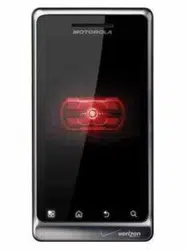Loading ...
Loading ...
Loading ...

CHAPTER 5: Wi-Fi and 3G Connectivity
130
4. Check the boxes to turn on Wi-Fi and receive a notification when an open Wi-Fi
network is within range.
5. Tap an available network to log into it. If the network requires a password, you’ll
only have to type it here once. Your DROID will remember your settings next time
you use this service.
If you want to add a private network that doesn’t broadcast its SSID, tap Add Wi-Fi
network. If you want to remove networks you no longer use, such as hotels you visited
only once, tap Manage Networks.
TIP: You can also use a Wi-Fi widget from your Home screen to toggle Wi-Fi on and off. See
Chapter 6, “Organize Your Home Screens” for specifics on adding widgets.
The clear advantage of Wi-Fi is speed. Wi-Fi is superior when it comes to uploading or
watching videos. Its chief disadvantage is distance. If you’re not within range of a Wi-Fi
network all day or even most of the day, you can extend your DROID’s battery life by
turning off your Wi-Fi signal.
Wi-Fi Security
A big consideration with Wi-Fi is security. If you’re using an encrypted connection, this
isn’t as much of a problem. However, those convenient, open Wi-Fi access points at the
coffee shop may in theory expose your phone to unwanted eavesdropping through an
exploit called the man-in-the-middle attack where someone intercepts your
unencrypted information before it reaches the Wi-Fi access point. It’s also sometimes
called a bucket brigade attack, so think of the attacker as a stranger standing in the
middle of a bucket brigade with the chance to see the contents of each bucket that
passes by.
Wi-Fi security usually involves some sort of password protection to access the network.
An older, less secure method of connecting to Wi-Fi is WEP. A more secure method is
WPA or WPA2. Most personal networks, like your router at home, can be set to use
WPA-PSK (pre-shared key.) This is a fancy way of saying that you have to type in a
password or passphrase to get access to the network.
CAUTION: If you have a choice in the matter, avoid relying on WEP for your Wi-Fi security. It’s an
old standard and very easy to crack.
Businesses that want to sell or restrict access to their network use a form of WPA-
enterprise. This type of connection usually requires you to log in when you open your
first web page, and it compares your username with a list of authorized users. In some
cases, you don’t actually have to log in, but you do have to click something to agree to
the location’s terms of service. This is still part of WPA security.
Loading ...
Loading ...
Loading ...
